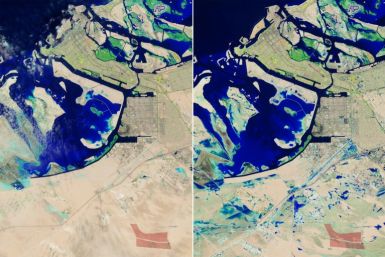Huawei P9 vs Samsung Galaxy S7: A comparative review of specs and features

The first quarter of 2016 has seen the launch of high-end flagships like Samsung’s Galaxy S7, Xiaomi Mi5 and LG G5. The beginning of the second quarter is marked by the launch another contender in the domain of premium flagships, the Huawei P9.
Here’s a comparative review of specifications and features of both the flagship devices:
Display and design
Both the flagships have bigger siblings, the Huawei P9 Plus and Galaxy S7 Edge, which come packed with slightly improved specs.
The Huawei P9 comes in an all-metal unibody design with curved edges . The smartphone features a 5.2-inch IPS LCD display with Full HD (1080x1920 pixel) resolution.
Samsung’s Galaxy S7, on the other hand, sports a 5.1-inch screen, just like Galaxy S6, protected by Gorilla Glass 4. Thanks to the pixel density of 577 ppi, the display delivers brighter, sharper and richer colours than the P9.
Huawei equipped the P9 with a fingerprint scanner which its predecessor, the P8 lacked.
Hardware
Both the devices are powered with the latest processors in the market. Huawei’s in-house HiSilicon Kirin 955 2.5GHz 64-bit ARM-based processor powers the P9.
Samsung has taken a unique route and launched the Galaxy S7 with different processors in different markets. For the international market, the Galaxy S7 is hipped with the company’s own homegrown octa-core Exynos 8890 chipset, whereas Qualcomm’s quad-core Snapdragon 820 powers the variant for the US and Chinese market.
Huawei’s latest offering comes with two RAM configurations, 3GB of RAM and 32GB of native memory and a beefy 4GB of RAM and 64GB of internal storage. There is also a microSD card slot, allowing the internal memory to be expanded up to 128GB.
On the other hand, the Samsung Galaxy S7 sports 4GB of RAM with 32GB or 64GB storage options. The company also restored its microSD card slot for memory expansion up to 200GB, which it dropped for the Galaxy S6 series.
Camera
The camera department remains the major focus of Huawei’s P9. The device touts a dual-lens camera unit featuring two 12-megapixel camera sensors with an f / 2.2 apertures. The Leica made dual-camera module will allow users to capture images and shoot videos in both bright and low light conditions, claims Huawei.
The Galaxy S7 houses a 12-megapixel rear-facing camera with a wider aperture (f/1.7), faster shutter speed and accurate auto-focus in low light conditions. With the next generation of Galaxy S6, the Korean tech giant also introduced its first Dual Pixel camera smartphone, which promises to deliver “brighter and sharper images even in low light.”
Battery
Both the Samsung Galaxy S7 and Huawei P9 sport 3,000mAh battery units. According to the AndroidPit, Samsung’s higher resolution screen will drain more power than the IPS display of Huawei P9. But AMOLED display will win over power hungry LCD screen.
Price
The 3GB/32GB Huawei P9 is priced at €599 (AU$897), whereas the model with 4GB/64GB internal memory will cost €649 (AU$972). Huawei has not announced its Australian pricing and availability.
In Australia, Samsung’s latest Galaxy S7 is available at AU$1149.
Related: Samsung Galaxy S7 price, pre-order and release date in Australia






